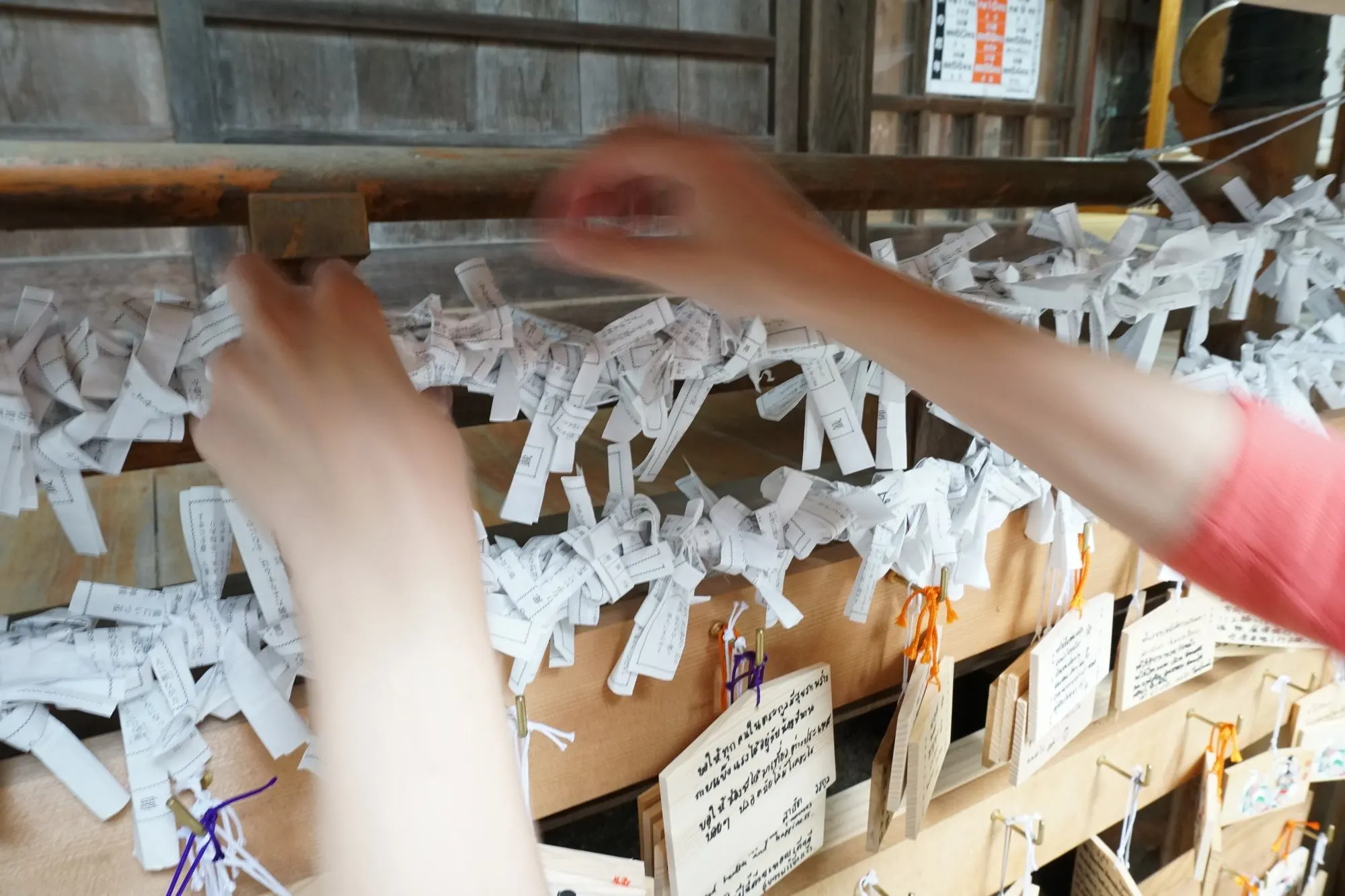On my first trip to Japan, I really wanted to get a fortune (called o-mikuji (御御籤, 御神籤) at one of the many Shinto shrines and Buddhist temples offering them. But I didn’t, because I was absolutely terrified of accidentally bringing bad luck home.
Japanese Fortunes: Don’t Bring Bad Luck Home
You see, in Japan, fortunes aren’t like Chinese restaurant fortune cookies, where nearly every fortune is happy, leaving you with positive vibes. Nope, in Japan you might unravel your fortune and discover that the worst kind of bad luck is heading your way. This isn’t a huge problem for native Japanese, as there is a workaround available. If you do get a bad luck fortune, no need to fret, you simply tie it to a tree (or to the designated “leave behind fortune” area), and the bad luck will blow away with the wind.
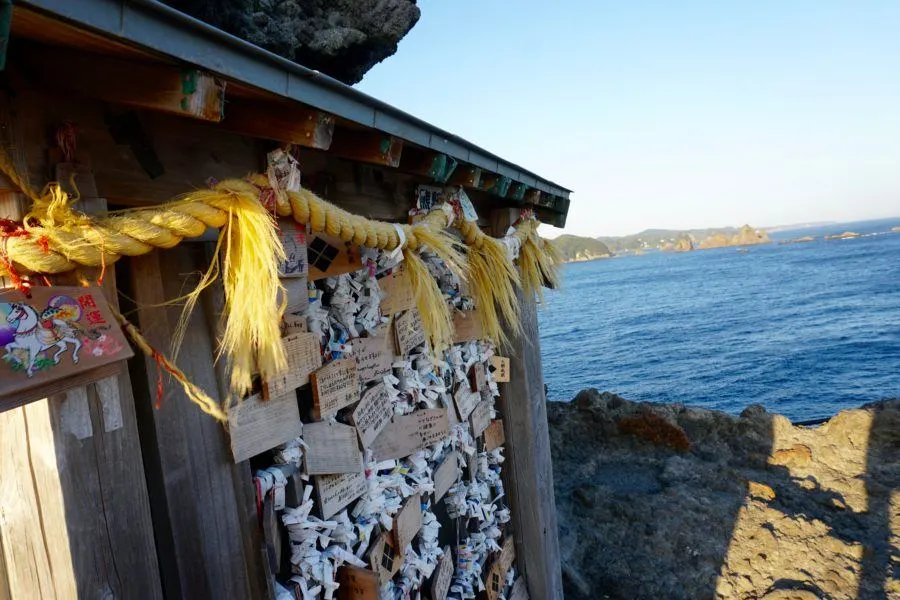
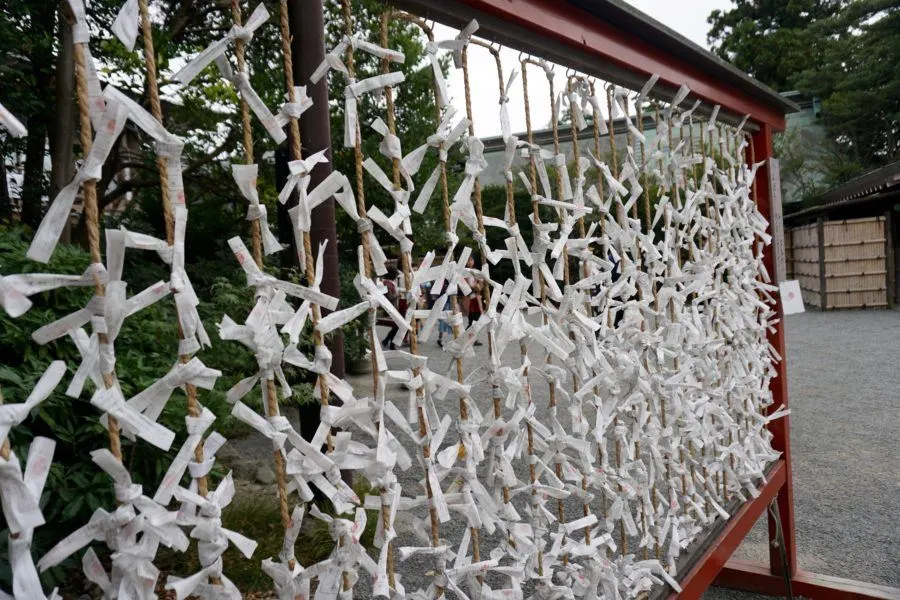
But selecting a fortune as a tourist is a risky proposition. The fortunes are almost always written in Japanese, so unless you have a translator with you, you’re on your own. I didn’t want to unwittingly bring my fortune home, find someone to translate it for me, then discover that devastating bad luck awaited me. Bad luck that mind you, could easily have been averted by leaving that fortune behind. I would be doomed.
But on this last press trip to Japan’s Kanto region, I was lucky to have a Japanese translator by my side, Kaz, who I peppered non-stop with questions for the entire trip. Kaz was happy to assist me with my dream of getting a Japanese fortune and translate it for me so that I wouldn’t have to worry about bringing bad luck home.
Note: if you don’t have your own translator with you, you might ask other temple-goers if they speak English and can help you out– the Japanese are exceedingly welcoming and helpful and will go out of their way to assist visitors. You can also try using a translation app, but this is tougher because of all the translation subtleties you might miss.
I decided to get my fortune at the scenic Arakuryama Segen Park in the Kanto region of Japan.
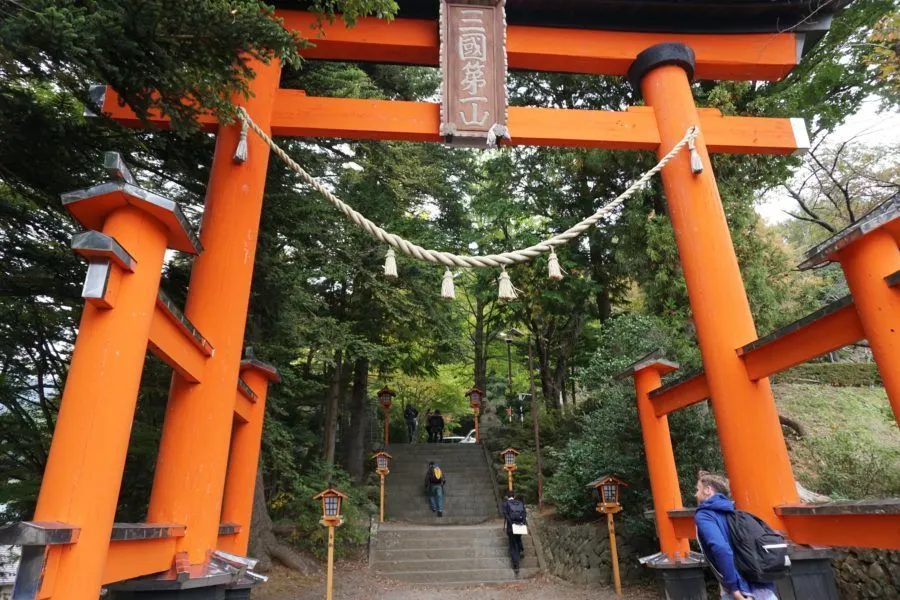
The tori gates as you enter Arakuryama Segen Park.
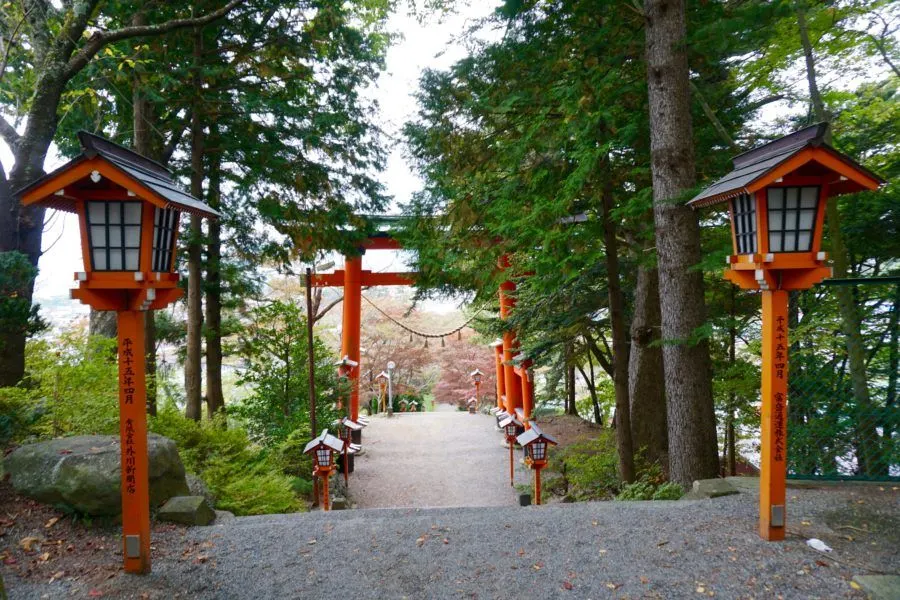
There were a lot of stairs here, but a nice way to walk off all the delicious Japanese snacks.
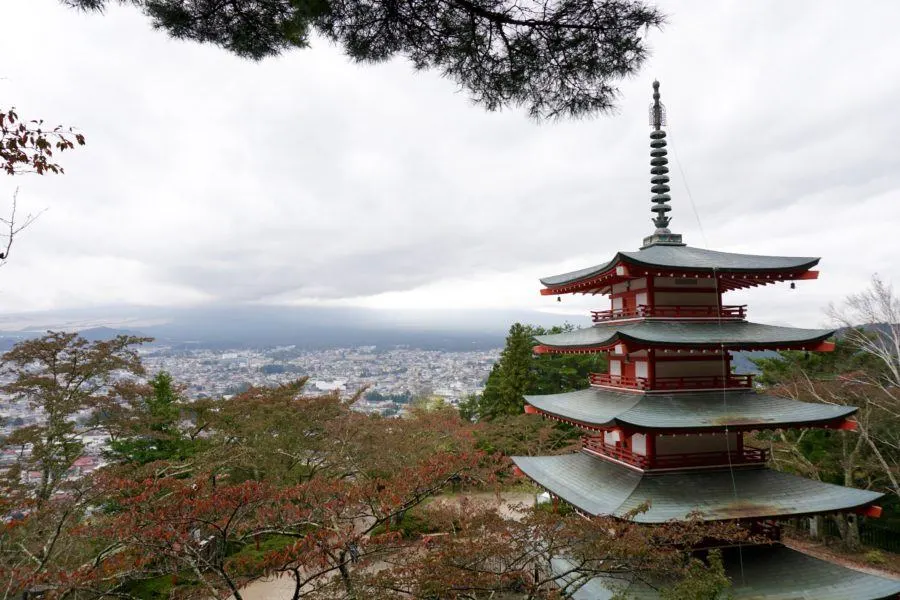
![]()
How to Get a Fortune in Japan.
There is a “system” for getting your Japanese fortune.
First, pay your respects. This is generally done with a bow, followed by ringing of a bell if there is one.
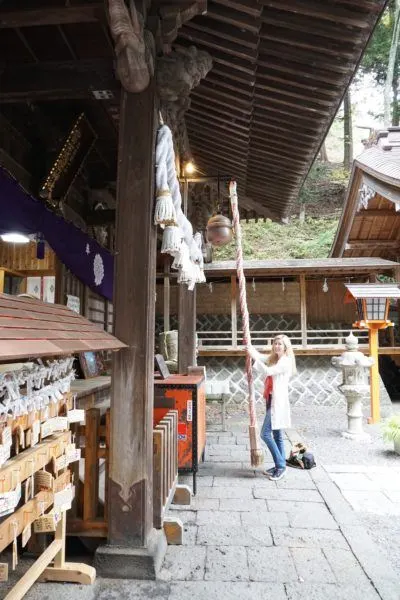
Above photo by Robert Schrader of Leave your Daily Hell
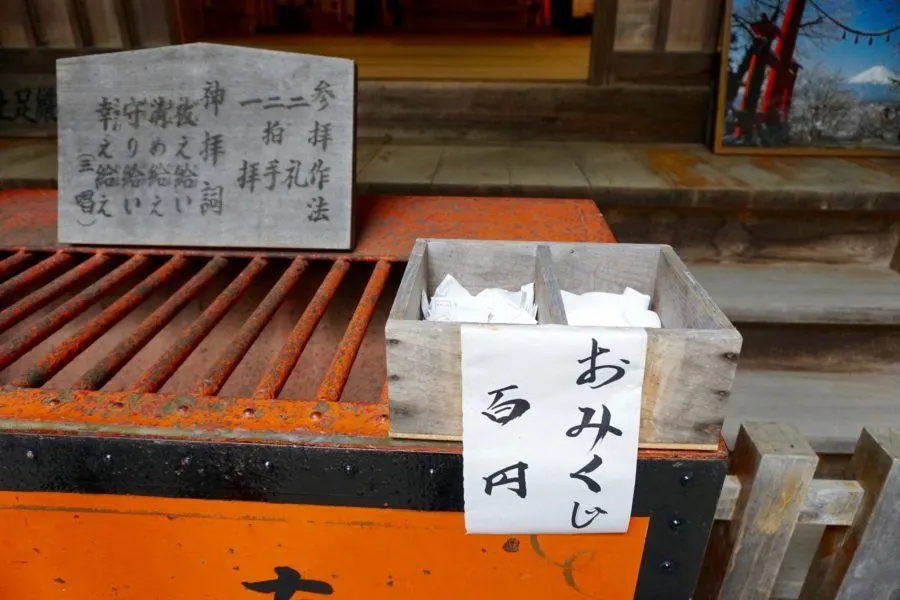
Next, find the fortunes (usually in a box or similar).
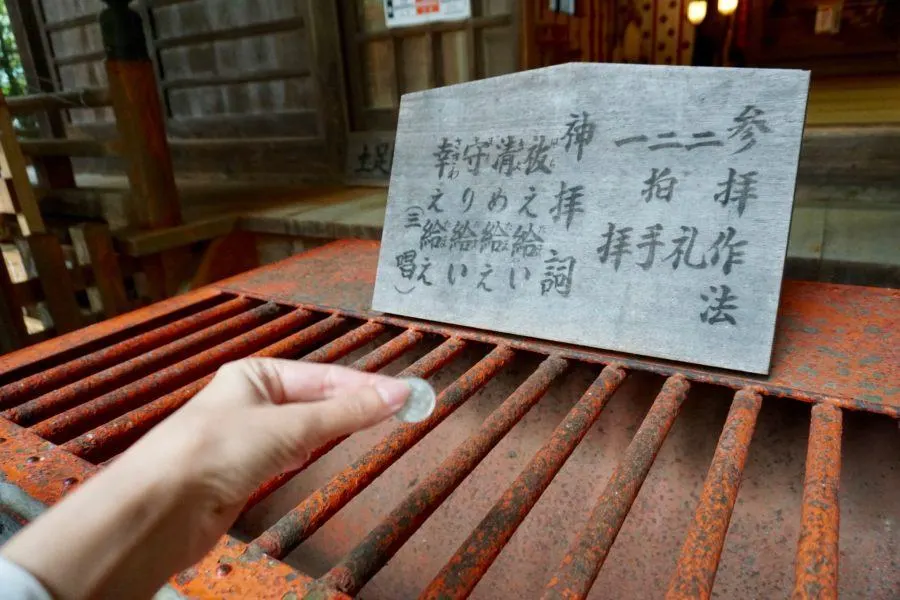
Make a small monetary offering. Select your fortune from the box.
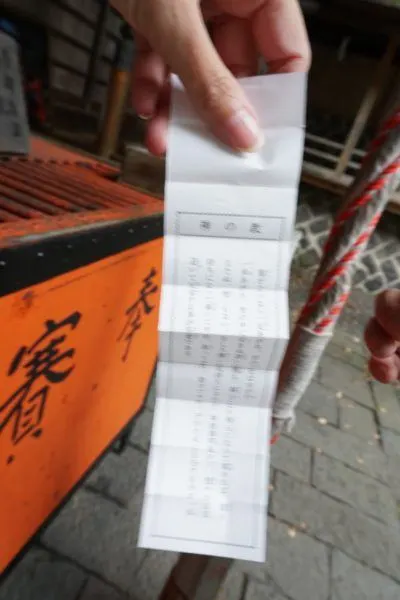
Unroll your fortune. Read it. Decide if it’s good luck or bad luck.
As Kaz translated my fortune to me in English, it seemed my fortune was more words of advice than an actual prediction of the future. I wasn’t surprised and agreed with the advice/fortune.
Last, you’ll want to decide whether to take your fortune with you or leave it behind. If the fortune’s bad, the decision is easy, you fold it, tie it, and leave it, hoping the bad luck will blow away. If the fortune is good, you can either bring it home, or to get even more good luck, also leave it behind (supposedly the effect is greater). Kaz advised me to leave my fortune behind so of course I wasn’t going to question it.
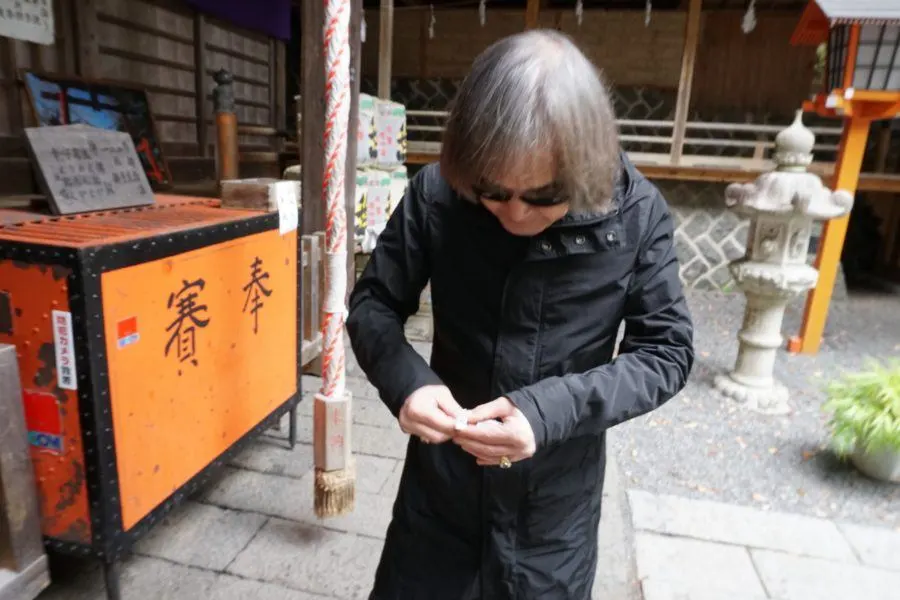
Kaz folds my fortune for me.
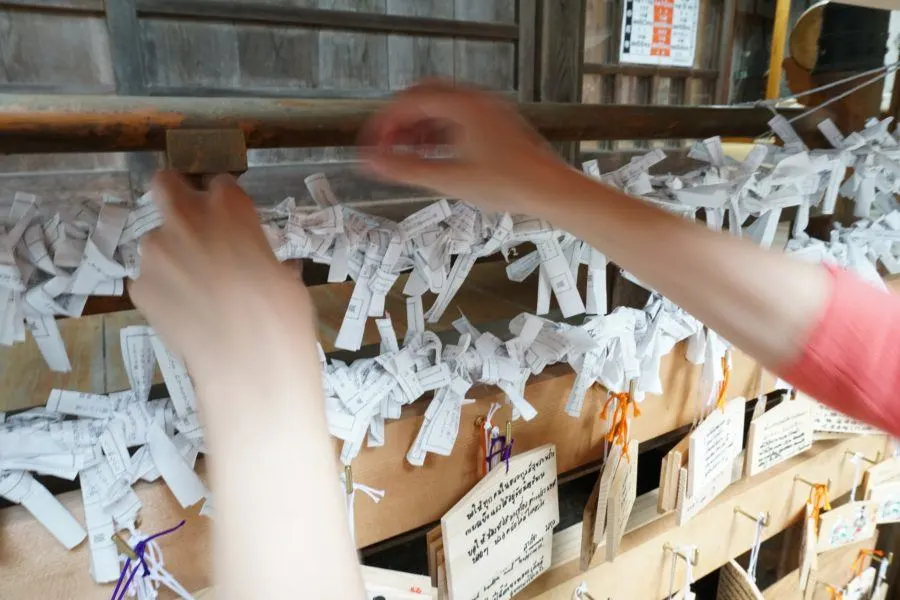
I tie my fortune to the place where fortunes are left.
Above photo by Robert Schrader of Leave your Daily Hell
Have you ever received a fortune in Japan? Tell us about your experiences!
Disclosure: My trip to the Kanto region was hosted by JTB, but all fortune getting was entirely of my own doing.

